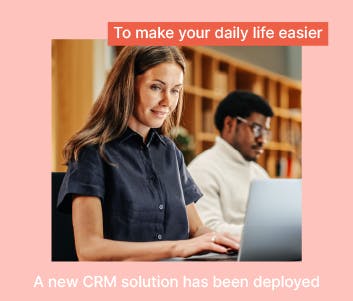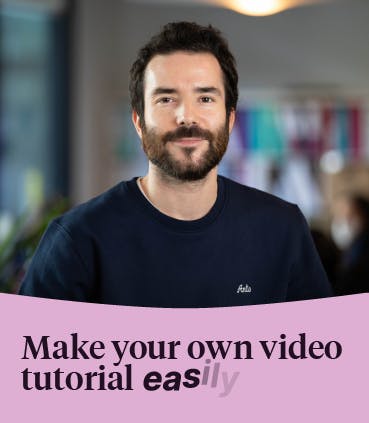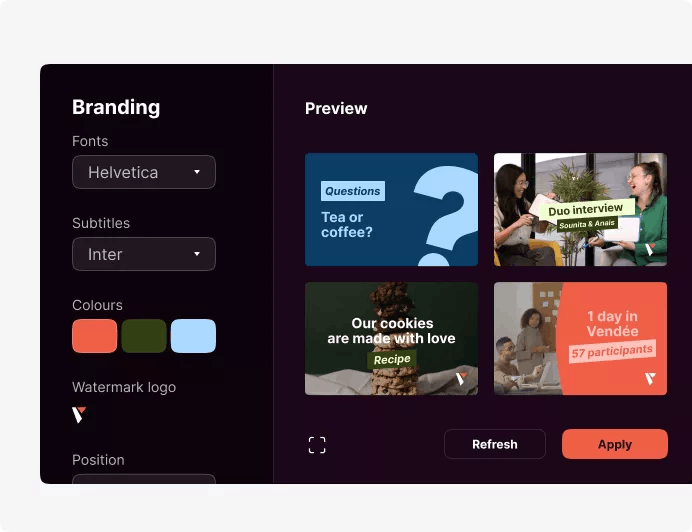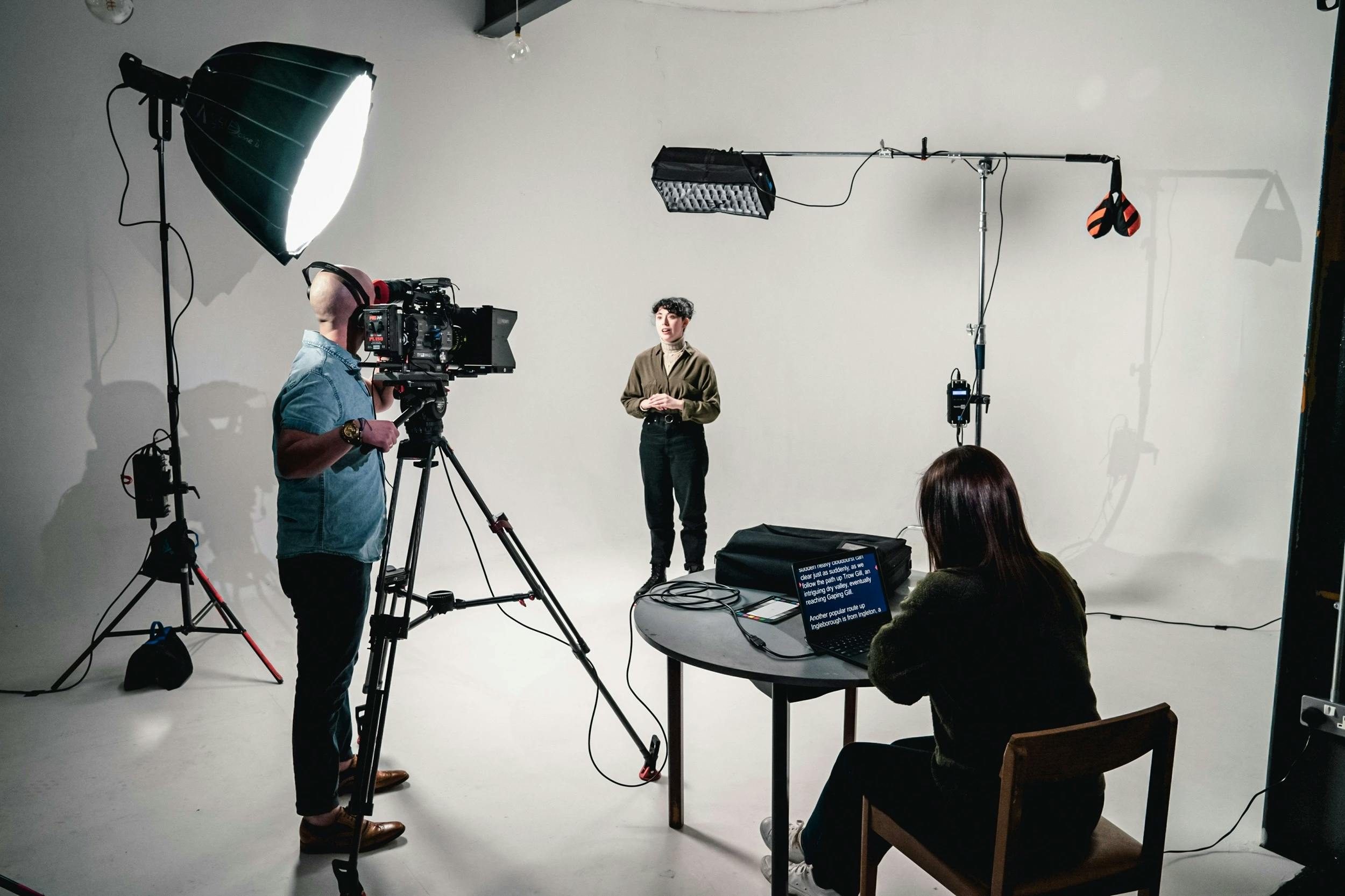Video interview: how to create great testimonials

Testimonials, whether from your customers or employees, should be inspiring. We explain how to make a successful video interview.
Nowadays, companies, either startups or large corporations, and marketing teams often use video testimonials, in the form of video interviews. These can be customer testimonials, promoting the product or solution, or employee testimonials, for recruitment purposes, if you want to speed up interview requests for example.
Nevertheless, these video interviews are of the utmost importance, as they reveal your expertise, succeed in convincing, and should make people want to call on you or join you. Therefore, you will have to polish them to produce quality content, which Internet users are very fond of on social networks. These testimonials will be a resource to feed your blog, which is a significant advantage over the competition.
If you have an online video creation platform at your disposal, you won’t need much equipment, technical skills or even the help of a studio 😉
Here is our little guide, our instructions, to get you started, and master the basics before preparing anything. You must put all the chances on your side, go step by step, so that your content is a hit.
First of all, the script and the questions to be asked during the interview
This is the first criterion. Before starting the video production, you must first determine, during the preparations, what will be said during this promotional video.
If it is a client testimonial, it is imperative to ask them in what context they came to you.
For example, at Pitchy, the first thing we always ask is why our clients need to make a video.
The reasons can vary between:
- a New Year’s Eve video,
- the arrival of new directors, new managers,
- announcements of new features, products, or services,
- making a teaser on social networks, for a product launch for example,
- the opening of a shop, or,
- any other institutional or exclusive commercial information.
Then, we ask them why they chose the Pitchy platform. Was it because of the large choice of templates? The simplicity of the tool? Was it both?
Don’t hesitate to dig into this subject. For example, by asking your clients in which cases they use your tool/platform/service, this may inspire your future prospects, who might not have thought of it.
And finally, encourage them to say something good about you, to end on a positive and rewarding note. For example:
- What did you think of the tool?
- Is it easy to use?
- Are you autonomous with the tool thanks to the training provided?
Then, the shooting of the video interview is crucial
A bright location, which will make you want to be there
The choice of location is never insignificant, whether you are located in Paris, Lyon, Marseille or elsewhere. Whether you want to showcase your company or a client’s, you will have to organise the space so that it looks good when filming.
For example, as you can see in this testimonial from DataValue, one of our clients, the place is:
- spacious,
- very well lit,
- tidy (this is very important!),
- decorated (but not too much) with a plant and pictures, that do not confuse the message,
- and a roll-up with the company’s graphic charter.
Some of our clients, such as Bouygues Telecom, take this logic even further by choosing a room with several animated screens, punctuating the testimony throughout.
Others, such as Avanade, go for a slightly more sober choice. A less aesthetically pleasing (but still chic and professional) location, with more emphasis on screens showing the Pitchy platform, as well as video footage of colleagues debating and discussing the way forward, to reinforce the corporate feel.
If you would like more advice on video shooting, we recommend you read our article on this topic.
Inspiring and convincing witnesses
The people who will be speaking during the interview will be briefed by you before the filming starts. They should:
- remember to look at the camera, or the smartphone,
- speak loudly enough, and articulate. If necessary, think of bringing a lapel-microphone, to be sure to have a quality sound (rather than a microphone),
- and if possible: smile, to give a warm image 😉
- think about the background too, for a better recording.
Take a look at the testimonial from Mazars, also about the Pitchy platform:
And then, the editing will have to be done carefully
Alternate face-to-face interview sequences and sequences filmed on the premises
As you can see from the video testimonials above, our clients are not satisfied to simply testify on camera. One of the most common strategies to add dynamism to the video interview is to also include footage of the interviewee either entering and leaving the premises, or talking to colleagues. The impact is obvious: there is a collective strength within the company, showing that decisions are made together, and that communication is key. The whole thing almost looks like a reportage.
Subtitles, so that the answers can be seen without the sound
And yes, this is crucial today. Think that your testimonial videos can be viewed in the morning (or evening) on public transport, by people without headphones at hand. And a video with subtitles is often perceived as less intrusive.
In addition, subtitles allow you to choose the language you want to see at the bottom of the video. Depending on your target audience, you can of course undertake a translation and thus change the language.
Dynamic music, but not too much
The music chosen should maintain a certain rhythm, so as not to be soporific and turn into “lift music”. However, it should not take up all the space either, at the risk of becoming deafening and confusing the message.
We particularly like this choice made by Orange, in their testimony:
Would you like to conduct your own interviews using a video platform? Request a demo of the Pitchy solution
Resources

















